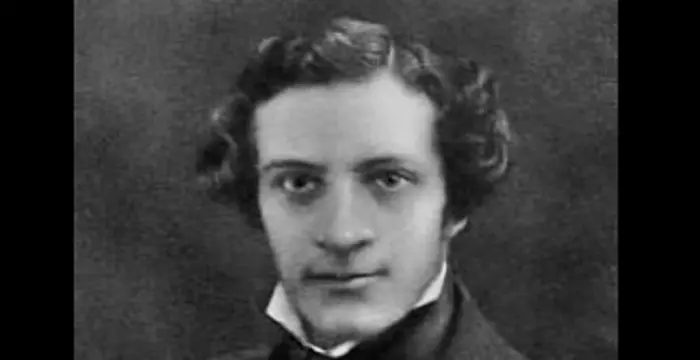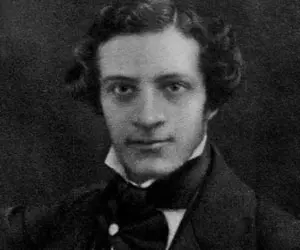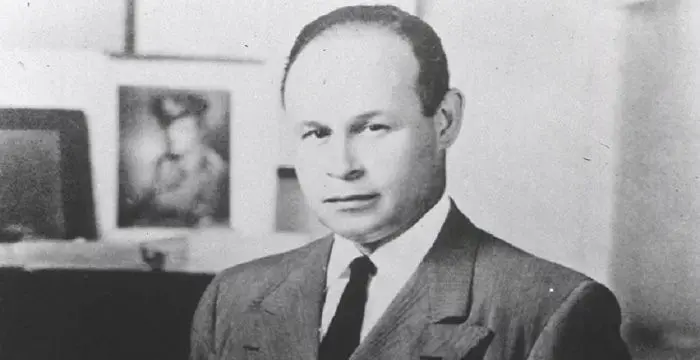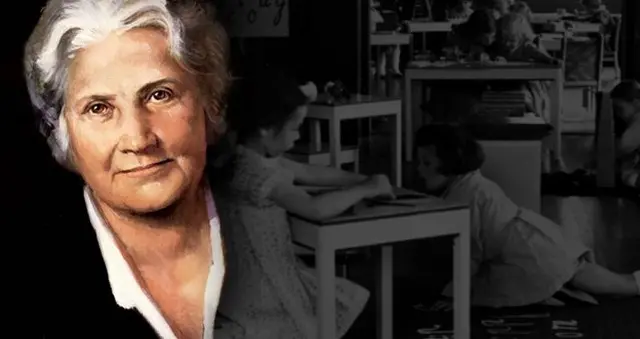
Henry Gray - Anatomist, Facts and Childhood
Henry Gray's Personal Details
Henry Gray was an English anatomist, who authored the famous book ‘Gray’s Anatomy’
| Information | Detail |
|---|---|
| Birthday | 1827 |
| Died on | June 13, 1861 |
| Nationality | British |
| Famous | Physicians, Anatomist, Surgeons |
| Universities |
|
| Birth Place | Belgravia |
| Gender | Male |
| Born in | Belgravia |
| Famous as | Anatomist and surgeon |
| Died at Age | 34 |
// Famous Anatomist
Albrecht von Haller
Albrecht von Haller was a renowned botanist of the 18th century and also regarded as the Father of modern physiology. This biography provides detailed information about his childhood, profile, career and timeline
Henry Gray's photo
Who is Henry Gray?
Henry Gray was an English anatomist and surgeon, best remembered for his book, ‘Gray’s Anatomy’. Born around the first quarter of the nineteenth century, he received his medical training from St. George’s Hospital Medical School and remained attached to it all through his short career. He was a methodical student who learnt anatomy by personally making each dissection, which was quite extraordinary in those days. Thus he became a master of his subject and began publishing papers while he was still a student. By the age of 25, he had been elected a Fellow of the Royal Society and by 26, he had earned several prestigious awards. As he turned 28, he started working with his friend Henry Vandyke Carter on a comprehensive anatomy book, which covered 750 pages and contained 363 figures. Next, he started working on pathology and published a number of papers on it. He also began working on tumors and is believed to have written important treatises on it. Unfortunately, he died from small pox before he could finish his work on tumors. He was then barely 34 years old.
// Famous Surgeons
Joseph Lister
Joseph Lister was a British surgeon who was the founder of antiseptic medicine. This biography of Joseph Lister provides detailed information about his childhood, life, achievements, works & timeline.
Charles R. Drew
Charles R. Drew was an American physician and surgeon who introduced the concept of ‘blood bank’. This biography profiles his childhood, life, works, career, achievements and timeline.
Charles Brenton Huggins
Charles Huggins was a Canadian-born American physician, surgeon and physiologist who won the Nobel Prize for Physiology or Medicine in 1966. This biography provides detailed information about his childhood, life, research, achievements & timeline.
Childhood & Early Life
Henry Gray was born in Belgravia, London, in 1827. His father, whose name is not known, was private messenger to King George IV and upon his death to his successor King William IV. Nothing is known about his mother. Henry was one of their four children.
Two of his siblings, a sister and a brother, died young. His surviving brother, Thomas William Gray, had two daughters, one of whom left some basic details about his background. He also had a nephew called Charles Gray, who was probably the son of his deceased brother.
The earliest record that we have is that he entered St. George’s Hospital on 6 May 1845 as a medical student. An article published in the St. George’s Hospital Gazette of 21 May 1908, provides a rudimentary picture of his college years.
Those who had known Gray during those days described him as a painstaking and methodical worker. It is also said that he learnt anatomy by dissecting each organ for himself rather than by watching others do it, as was the practice in those days.
Gray also published several papers while he was still a student. ‘The Origin, Connexions and Distribution of Nerves to the Human Eye and Its Appendages, Illustrated by Comparative Dissections of the Eye in Other Vertebrate Animals’, published in 1848, was one of them.
In 1849, Gray finished his medical studies and qualified as a member of the Royal College of Surgeons. Thereafter from June, he served in St. George’s Hospital as house surgeon for a period of twelve months.
Career
In 1852, after finishing his stint as house surgeon at the St. George’s Hospital, Gray was appointed a demonstrator of anatomy at the same hospital. In the same year, he published two major papers in the ‘Philosophical Transactions’, a science journal published by Royal Society.
The first article titled, ‘On the Development of the Retina and Optic Nerve, and of the Membranous Labyrinth and Auditory Nerve', was based on his work on chick embryo. In it, he demonstrated that the retina develops from a protrusion of the brain.
His second article, ‘On the Development of the Ductless Glands in the Chick’, dealt with the adrenal glands, thyroids, and the spleen. These works impressed the scholars so much that in the same year, he was appointed a Fellow of the Royal Society. He was only 25 years old at that time.
In 1853, Gray was made a lecturer of anatomy. With the support of a grant from Royal Society, he now continued his work on spleen, performing chemical as well as ligaturing experiments on its blood.
The experimentation culminated into one of the major works of his life; a treatise titled ‘The Structure and Use of the Spleen’. Published in 1854, it not only contains his own observations, but also a review of the previous works on spleen.
In 1855, he began thinking about producing an inexpensive and accessible textbook on anatomy for medical students. He then approached his colleague Henry Vandyke Carter with the idea. It was decided that while Gray would write the text, Carter would illustrate each organ.
However, for such venture, they needed to study the organs afresh. They used the Anatomy Act of 1832, which allowed doctors, teachers of anatomy and bona fide medical students to procure unclaimed corpses from workhouse and hospital mortuaries and to dissect donated bodies without penalty.
For 18 months, Gray and Carter worked on them, dissecting bodies to have firsthand knowledge of human anatomy. Finally in 1858, the book was published as ‘Anatomy: Descriptive and Surgical’ by John William Parker in London and became instantly popular.
Later he started working on pathology and wrote a number of papers on that. Around this time, he also became the curator of the St. George’s Hospital Museum and a surgeon at St. James’ Infirmary.
Major Works
Henry Gray is best remembered for his book, ‘Anatomy: Descriptive and Surgical.’ In spite of the fact that there were other books readily available on anatomy, it became an instant hit as much for its lucid language and logical arrangement of topics as for the 363 illustrations made by Carter.
The book was first published in Great Britain in 1858 and in the United States of America in 1859. Thereafter, Gray once again revised the text and the second edition was published in 1860.
After his death, the book continued to be revised and republished as ‘Gray’s Anatomy’ and the latest (the 41st) edition of the book was published in September 2015. Even today, it is widely regarded as the most important work on anatomy.
‘The Structure and Use of the Spleen’ is another of his important works. In it, he established the origin of the spleen from the dorsal mesogastrium, a discovery mistakenly attributed to Johannes Müller and also provided description of the lymphatics, the nerves and the circulation in the spleen.
Awards & Achievements
In 1848, he was awarded the Triennial Prize by the Royal College of Surgeons for his work ‘The Origin, Connexions and Distribution of Nerves to the Human Eye and Its Appendages, Illustrated by Comparative Dissections of the Eye in Other Vertebrate Animals.’
In 1852, he became a Fellow of Royal Society and later Fellow of the Royal College of Surgeons.
In 1853, Gray was awarded the Astley Cooper Prize, comprising of three hundred guineas, for his work ‘The Structure and Use of the Spleen’.
Personal Life & Legacy
In 1861, Henry Gray was engaged to be married. Unfortunately, he died before the marriage could take place.
Sometime in 1861, Henry’s ten year old nephew, Charles Gray, was inflicted with small pox, a dreaded disease in those days. Henry nursed him day and night. Although Charles recovered, Henry was afflicted with the severest form of small pox.
It is said that the lesions were so numerous one could not distinguish one from another. He died from the disease on June 13, 1861 and buried at East Highgate Cemetery in London. He was only 34 years old at the time of his death.
Trivia
In 1861, Gray was considered for the post of assistant surgeon at the St. George’s Hospital, but died on the very day he was to appear before the interview board.
Towards the end of his life, he had also started working on tumors and began writing major treatises on the subject. Unfortunately, the manuscript was never found. As was the practice in those days, it must have been burned by the health officials along with all other belongings.
// Famous Physicians
Al-Zahrawi
Al-Zahrawi, was an illustrious medieval Arab Muslim physician and surgeon. Check out this biography to know about his childhood, family life, achievements and interesting facts about him.
Jabir Ibn Hayyan
Jabir Ibn Hayyan was a medieval era polymath. Check out this biography to know about his life, works and achievements.
Maria Montessori
Maria Montessori was a physician and educator who developed the approach of Montessori education. This biography of Maria Montessori provides detailed information about her childhood, life, achievements, works & timeline.
Henry Gray biography timelines
- // 1827Henry Gray was born in Belgravia, London, in 1827. His father, whose name is not known, was private messenger to King George IV and upon his death to his successor King William IV. Nothing is known about his mother. Henry was one of their four children.
- // 1832However, for such venture, they needed to study the organs afresh. They used the Anatomy Act of 1832, which allowed doctors, teachers of anatomy and bona fide medical students to procure unclaimed corpses from workhouse and hospital mortuaries and to dissect donated bodies without penalty.
- // 6th May 1845The earliest record that we have is that he entered St. George’s Hospital on 6 May 1845 as a medical student. An article published in the St. George’s Hospital Gazette of 21 May 1908, provides a rudimentary picture of his college years.
- // 1848In 1848, he was awarded the Triennial Prize by the Royal College of Surgeons for his work ‘The Origin, Connexions and Distribution of Nerves to the Human Eye and Its Appendages, Illustrated by Comparative Dissections of the Eye in Other Vertebrate Animals.’
- // 1849In 1849, Gray finished his medical studies and qualified as a member of the Royal College of Surgeons. Thereafter from June, he served in St. George’s Hospital as house surgeon for a period of twelve months.
- // 1852In 1852, after finishing his stint as house surgeon at the St. George’s Hospital, Gray was appointed a demonstrator of anatomy at the same hospital. In the same year, he published two major papers in the ‘Philosophical Transactions’, a science journal published by Royal Society.
- // 1852In 1852, he became a Fellow of Royal Society and later Fellow of the Royal College of Surgeons.
- // 1853In 1853, Gray was made a lecturer of anatomy. With the support of a grant from Royal Society, he now continued his work on spleen, performing chemical as well as ligaturing experiments on its blood.
- // 1853In 1853, Gray was awarded the Astley Cooper Prize, comprising of three hundred guineas, for his work ‘The Structure and Use of the Spleen’.
- // 1854The experimentation culminated into one of the major works of his life; a treatise titled ‘The Structure and Use of the Spleen’. Published in 1854, it not only contains his own observations, but also a review of the previous works on spleen.
- // 1855In 1855, he began thinking about producing an inexpensive and accessible textbook on anatomy for medical students. He then approached his colleague Henry Vandyke Carter with the idea. It was decided that while Gray would write the text, Carter would illustrate each organ.
- // 1858For 18 months, Gray and Carter worked on them, dissecting bodies to have firsthand knowledge of human anatomy. Finally in 1858, the book was published as ‘Anatomy: Descriptive and Surgical’ by John William Parker in London and became instantly popular.
- // 1859 To 1860The book was first published in Great Britain in 1858 and in the United States of America in 1859. Thereafter, Gray once again revised the text and the second edition was published in 1860.
- // 1861In 1861, Henry Gray was engaged to be married. Unfortunately, he died before the marriage could take place.
- // 1861Sometime in 1861, Henry’s ten year old nephew, Charles Gray, was inflicted with small pox, a dreaded disease in those days. Henry nursed him day and night. Although Charles recovered, Henry was afflicted with the severest form of small pox.
- // 1861In 1861, Gray was considered for the post of assistant surgeon at the St. George’s Hospital, but died on the very day he was to appear before the interview board.
- // 13th Jun 1867It is said that the lesions were so numerous one could not distinguish one from another. He died from the disease on June 13, 1861 and buried at East Highgate Cemetery in London. He was only 34 years old at the time of his death.
// Famous British peoples
Wentworth Miller
Wentworth Miller is an American actor and screenwriter who achieved recognition for his role in the TV series ‘Prison Break’.
Sophie Reade
Sophie Victoria Reade is a British model and reality show star. Let’s take a look at her family and personal life, including her age, birthday, boyfriends, and some interesting facts.
Josh Temple
Check out all that you wanted to know about Josh Temple (Slogoman), the famous British YouTube Personality; his birthday, his family and personal life, his girlfriends, fun trivia facts and more.
Yammy Xox
Check out all that you wanted to know about Yammy Xox, the famous British YouTube Personality; her birthday, her family and personal life, her boyfriends, fun trivia facts and more.
Grian
Grian is an English YouTube gamer and social media influencer. Check out this biography to know about his birthday, childhood, family life, achievements and fun facts about him.
Benjamin Atkinson
Benjamin Atkinson is the son of the world-renowned British actor and comedian, Rowan Atkinson. Check out this biography to know about his childhood, family, personal life, including his age, birthday, etc.
Henry Gray's FAQ
When was Henry Gray died?
Henry Gray was died at 1861-06-13
Where was Henry Gray died?
Henry Gray was died in Belgravia
Which age was Henry Gray died?
Henry Gray was died at age 34
Where is Henry Gray's birth place?
Henry Gray was born in Belgravia
What is Henry Gray nationalities?
Henry Gray's nationalities is British
What was Henry Gray universities?
Henry Gray studied at St George's, University of London
How famous is Henry Gray?
Henry Gray is famouse as Anatomist and surgeon













